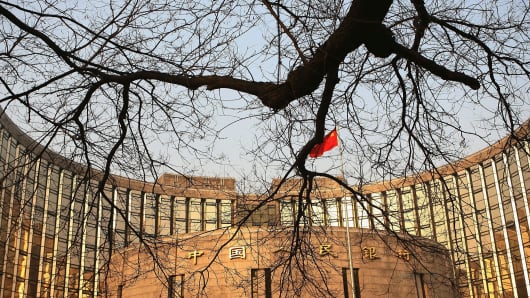Despite better-than-expected earnings from some of China's largest domestic banks, fears persist about risks in the sector, with one analyst arguing that the sector could soon follow the route of Greek and Spanish banks.
Last week China's Big Four banks reported combined first-half earnings growth of 12.5 percent, beating market expectations, yet many analysts remain bearish given the banks' deteriorating asset quality.
One key concern is the rising level of non-performing loans (NPL) - loans that borrowers are unable to pay back - which, according to Chinese government data, rose for the seventh consecutive quarter to 539.5 billion yuan ($88 billion) in the second quarter of this year.
(Read more: Behind China's shadow banking system)
Paul Schulte, CEO of Schulte Research International, said the amount of bad loans on Chinese banks' balance sheets had led him to draw parallels with Greek and Spanish lenders.
"Either the market is wrong, or the accounts are wrong," said Schulte, referring to the disparity between stock market valuations and their accounts.
"I tend to think that over a long period of time the market is right and this has been a two-year re-rating of Chinese banks...Mr. Market is telling us that the large banks [in China] are facing a similar situation to Spain and the small banks [in China] are facing a similar situation to Greece," he added.





